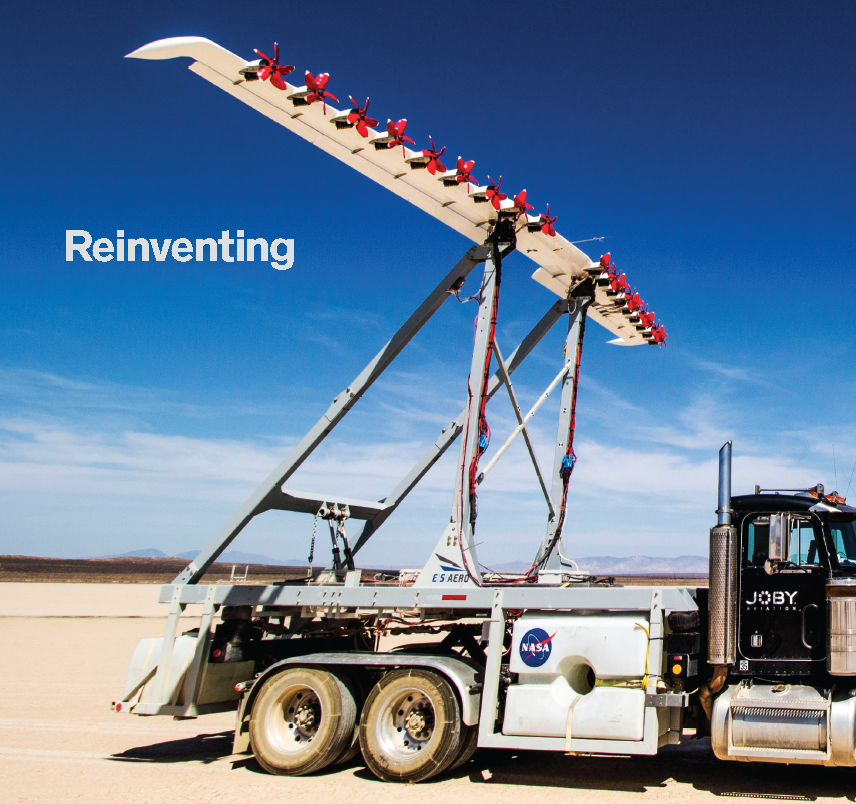- Our Story
- Publications & Resources
- Publications & Resources
- Publications
- IEEE Signal Processing Magazine
- IEEE Journal of Selected Topics in Signal Processing
- IEEE Signal Processing Letters
- IEEE Transactions on Computational Imaging
- IEEE Transactions on Image Processing
- IEEE Transactions on Information Forensics and Security
- IEEE Transactions on Multimedia
- IEEE Transactions on Signal and Information Processing over Networks
- IEEE Transactions on Signal Processing
- IEEE TCI
- IEEE TSIPN
- Data & Challenges
- Submit Manuscript
- Guidelines
- Information for Authors
- Special Issue Deadlines
- Overview Articles
- Top Accessed Articles
- SPS Newsletter
- SigPort
- SPS Resource Center
- Publications FAQ
- Blog
- News
- Dataset Papers
- Conferences & Events
- Community & Involvement
- Professional Development
- For Volunteers
- Information for Authors-OJSP
-
Home
Conferences Events IEEE Signal Processing Magazine IEEE SPL Article IEEE TIFS Article IEEE TMM Article IEEE TSP Article Jobs in Signal Processing Lectures Machine Learning Seasonal Schools Signal Processing News SPM Article SPS Distinguished Lectures SPS Newsletter Article SPS Webinar SPS Webinars SPS Webinar Series Webinar webinars
-
Our Story
What is Signal Processing?

The technology we use, and even rely on, in our everyday lives –computers, radios, video, cell phones – is enabled by signal processing. Learn More » -
Publications & Resources
-
SPS Resources
- Signal Processing Magazine The premier publication of the society.
- SPS Newsletter Monthly updates in Signal Processing
- SPS Resource Center Online library of tutorials, lectures, and presentations.
- SigPort Online repository for reports, papers, and more.
- SPS Feed The latest news, events, and more from the world of Signal Processing.
-
SPS Resources
-
Conferences & Events
-
Community & Involvement
-
Membership
- Join SPS The IEEE Signal Processing Magazine, Conference, Discounts, Awards, Collaborations, and more!
- Chapter Locator Find your local chapter and connect with fellow industry professionals, academics and students
- Women in Signal Processing Networking and engagement opportunities for women across signal processing disciplines
- Students Scholarships, conference discounts, travel grants, SP Cup, VIP Cup, 5-MICC
- Young Professionals Career development opportunities, networking
- Get Involved
-
Technical Committees
- Applied Signal Processing Systems
- Audio and Acoustic Signal Processing
- Bio Imaging and Signal Processing
- Computational Imaging
- Image Video and Multidimensional Signal Processing
- Information Forensics and Security
- Machine Learning for Signal Processing
- Multimedia Signal Processing
- Sensor Array and Multichannel
- Signal Processing for Communication and Networking
- Signal Processing Theory and Methods
- Speech and Language Processing
- Technical Working Groups
- More TC Resources
-
Membership
-
Professional Development
-
Professional Development
- Signal Processing Mentorship Academy (SigMA) Program
- Micro Mentoring Experience Program (MiME)
- Distinguished Lecturer Program
- Distinguished Lecturers
- Distinguished Lecturer Nominations
- Past Lecturers
- Distinguished Industry Speaker Program
- Distinguished Industry Speakers
- Distinguished Industry Speaker Nominations
- Industry Resources
- IEEE Training Materials
- Jobs in Signal Processing: IEEE Job Site
-
Career Resources
- SPS Education Program Educational content in signal processing and related fields.
- Distinguished Lecturer Program Chapters have access to educators and authors in the fields of Signal Processing
- Job Opportunities Signal Processing and Technical Committee specific job opportunities
- Job Submission Form Employers may submit opportunities in the area of Signal Processing.
-
Professional Development
-
For Volunteers
-
For Board & Committee Members
- Board Agenda/Minutes* Agendas, minutes and supporting documentation for Board and Committee Members
- SPS Directory* Directory of volunteers, society and division directory for Board and Committee Members.
- Membership Development Reports* Insight into the Society’s month-over-month and year-over-year growths and declines for Board and Committee Members
-
For Board & Committee Members
Popular Pages
Today's:
- Information for Authors
- (ICME 2026) 2026 IEEE International Conference on Multimedia and Expo
- IEEE Transactions on Information Forensics and Security
- IEEE Transactions on Image Processing
- Conference Call for Papers
- Submit a Manuscript
- IEEE Journal of Selected Topics in Signal Processing
- 2025 Picture Coding Symposium (PCS)
- IEEE Transactions on Multimedia
- (ICIP 2026) 2026 IEEE International Conference on Image Processing
- (CAI 2026) IEEE Conference on Artificial Intelligence 2026
- (ISBI 2026) 2026 IEEE 23rd International Symposium on Biomedical Imaging
- Editorial Board
- Access Restricted
- Unified EDICS
All time:
- Information for Authors
- Submit a Manuscript
- IEEE Transactions on Image Processing
- IEEE Transactions on Information Forensics and Security
- IEEE Transactions on Multimedia
- IEEE Transactions on Audio, Speech and Language Processing
- IEEE Signal Processing Letters
- IEEE Transactions on Signal Processing
- Conferences & Events
- IEEE Journal of Selected Topics in Signal Processing
- Information for Authors-SPL
- Conference Call for Papers
- Signal Processing 101
- IEEE Signal Processing Magazine
- Guidelines
Last viewed:
- Video & Image Processing Cup
- Overview Articles
- Information for Authors
- Information for Authors-SPM
- Meet SPS Member Ahmet Mete Elbir
- Postdoc in Electrical Engineering
- Submit a Manuscript
- IEEE Transactions on Image Processing
- (ICME 2026) 2026 IEEE International Conference on Multimedia and Expo
- Signal Processing Cup
- Information for Authors-SPL
- Login Error
- IEEE Transactions on Signal Processing
- Publications FAQ
- IEEE Transactions on Information Forensics and Security
What Should We Learn? Reinventing the wing With electric propulsion……
You are here
Newsletter Menu
Newsletter Categories
Top Reasons to Join SPS Today!
1. IEEE Signal Processing Magazine
2. Signal Processing Digital Library*
3. Inside Signal Processing Newsletter
4. SPS Resource Center
5. Career advancement & recognition
6. Discounts on conferences and publications
7. Professional networking
8. Communities for students, young professionals, and women
9. Volunteer opportunities
10. Coming soon! PDH/CEU credits
Click here to learn more.
News and Resources for Members of the IEEE Signal Processing Society
What Should We Learn? Reinventing the wing With electric propulsion……

Five years ago, engineers at NASA started to think about using a large number of electric motors to create a blown wing, later naming the project LEAPTech, for Leading Edge Asynchronous Propeller Technology. The novel configuration was based on an old concept: The idea—known as a “blown wing”—was to propel air at high speed over the wing using many motors and propellers mounted along the leading edge. Usually, the speed of this airflow is about the same as the speed the aircraft is moving; that’s why airplanes need to pick up speed before they can take off. But with many propellers blowing air over it at high speed, the wing behaves as though it’s traveling faster than it actually is, providing greater lift.
That’s a key advantage, because with greater lift, you can use a smaller wing, one that would otherwise require inordinately long runways so that the plane could take off and land at high speed. The situation is different in flight, when the plane is traveling fast and only a small wing is needed to provide the requisite lift. During that phase of flight, a larger wing is a disadvantage, because drag forces act over the whole area of the wing, reducing efficiency.
So what’s an airplane designer to choose: a big wing or a small one? Takeoff and landing considerations usually rule the day, so aircraft end up with wings that are too large for efficient cruising. A larger wing also means that the aircraft will be tossed around more when it encounters turbulence.
The blown wing provides a solution to this conundrum. During takeoff and landing, air can be blown over the wing at higher speeds, providing additional lift without sacrificing cruise performance. Although a few aircraft have been developed in the past with blown wings, the use of combustion engines for propulsion limited how far their designers could go. They had to use relatively few, large propellers, which aren’t well suited to pushing air at high speed.
Joby Aviation, a startup formed in 2009 to develop personal electric aircraft, had already been collaborating with NASA. When my Joby colleagues and I learned about LEAPTech, we jumped at a chance to get involved. Rounding out the LEAPTech collaboration was Empirical Systems Aerospace (ESAero), another small business that had worked with NASA to investigate how electric propulsion can improve aircraft performance.
NASA hoped to vet the idea with an actual test of a wing and propellers, in part because the relevant aerodynamic effects are very complex, and so computational fluid dynamics, or CFD, simulations of them would perhaps not be completely trustworthy. Another concern was that this distributed propulsion system might turn out to be too complicated to operate reliably in a real-world environment.
The paper entitled Reinventing the wing With electric propulsion and lots of propellers, planes can use smaller wings to fly efficiently published by IEEE Spectrum in August 2018 present the project and the future of the plan.
Open Calls
| Nomination/Position | Deadline |
|---|---|
| Call for Nominations for the SPS Chapter of the Year Award | 15 October 2025 |
| Call for Papers for 2026 LRAC Workshop | 22 October 2025 |
| Submit Your 2026 ICASSP Workshop Paper | 22 October 2025 |
| Submit a Proposal for ICASSP 2030 | 31 October 2025 |
| Call for Project Proposals: IEEE SPS SigMA Program - Signal Processing Mentorship Academy | 2 November 2025 |
| Submit Your Proposals for 2026 Member-Driven Initiatives | 21 November 2025 |
| IEEE Signal Processing Society Annual Election Opens on 17 October | 4 December 2025 |
Society News
- Upcoming SPS Webinar! 4 October 2018: 40 Years of Tracking for Radar Systems: A Cross-Disciplinary Academic and Industrial Viewpoint
- Job Opportunities in Signal Processing
- New SPS Technical Interest Profile Codes
- Meet the Candidates: 2019 IEEE Division IX Director-Elect
- Expansion of MGA Online Petition Forms for New Geographic Units
- Upcoming Distinguished Lectures
Technical Committee News
Publications News
Conferences & Events
SPS Social Media
- IEEE SPS Facebook Page https://www.facebook.com/ieeeSPS
- IEEE SPS X Page https://x.com/IEEEsps
- IEEE SPS Instagram Page https://www.instagram.com/ieeesps/?hl=en
- IEEE SPS LinkedIn Page https://www.linkedin.com/company/ieeesps/
- IEEE SPS YouTube Channel https://www.youtube.com/ieeeSPS
Home | Sitemap | Contact | Accessibility | Nondiscrimination Policy | IEEE Ethics Reporting | IEEE Privacy Policy | Terms | Feedback
© Copyright 2025 IEEE - All rights reserved. Use of this website signifies your agreement to the IEEE Terms and Conditions.
A public charity, IEEE is the world's largest technical professional organization dedicated to advancing technology for the benefit of humanity.









